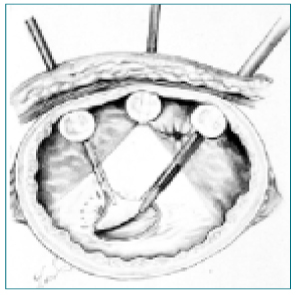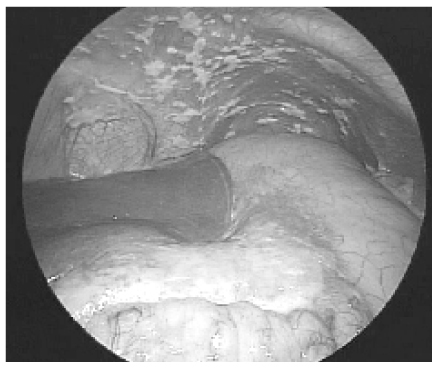J Korean Med Assoc.
2003 Aug;46(8):692-700. 10.5124/jkma.2003.46.8.692.
Laparoscopic Surgery for Gastric Cancer
- Affiliations
-
- 1Department of General Surgery, Seoul National University College of Medicine, Bundang Hospital, Korea. hhkim@SNUBH.org
- KMID: 2183108
- DOI: http://doi.org/10.5124/jkma.2003.46.8.692
Abstract
- Advanced laparoscopic surgeries have been widely practiced with an advent of sophisticated instrumentation and development of new technologies. Selection of laparoscopic therapeutic modalities such as intragastric mucosal resection, local resection, and gastrectomy with lymphadenectomy have been decided by gastric cancer treatment guidelines which will be published in the near future in Korea. The indication of laparoscopic surgery is mainly based on the size of lesion, depth of tumor, and histological type. However in order to extend the indications of laparoscopic surgery for gastric cancer, standardization of the procedure of laparoscopic en-block lymphadenectomy is necessary. For more active adoption of Minimally Invasive Surgery in the field of gastric diseases, it is mandatory to resolve medical insurance obstacle and to verify the advantages of this surgery without harming the basic principles of cancer surgery through prospective randomized studies. It is speculated that the 'tailored therapy' with less invasive laparoscopic surgery for stage l, ll and more agressive conventional open surgery for stage lll, IV will be the surgical treatment trend for gastric cancer in the near future.
MeSH Terms
Figure
Reference
-
1. Brune Iris B. Laparo-endoscopic Surgery. 1996. Second ed. Munich: Blackwell Science;125.2. Lau WY, Leung KL, Kwong KH, Davey IC, Robertson C, Ci AK, et al. A randomized study comparing laparoscopic versus open repair of perforated peptic ulcer using sutureless technique. Ann Surg. 1996. 224:131–138.
Article3. Siu WT, Leong HT, Law BK, Chau CH, Li AC, Li MK, et al. Laparoscopic repair for perforated peptic ulcer : a randomized controlled trial. Ann Surg. 2002. 235:313–319.4. Choi YB, Oh ST. Laparoscopy in the management of gastric submucosal tumors. Surg Endosc. 2000. 14:741–745.
Article5. Cuschieri A. Laparoscopic gastric resection. Surg Clin North Am. 2000. 80:1269–1284.
Article6. Ohashi S. Laparoscopic intraluminal (intragastric) surgery for early gastric cancer. A new concept in laparoscopic surgery. Surg Endosc. 1995. 9:169–171.7. Ohgami M, Otani Y, Kumai K, Kubota T, Kim Yl, Kitajima M. Curative laparoscopic surgery for early gastric cancer : five years experience. World J Surg. 1999. 23(2):187–192.8. Kitano S, Iso Y, Moriyama M, Sugimachi K. Laparoscopy-assisted Billroth I gastrectomy. Surg Laparosc Endosc. 1994. 4(2):146–148.9. Uyama I, Sugioka A, Fujita J, Komori Y, Matsui H, Hasumi A. Laparoscopic total gastrectomy with distal pancreaticosplenectomy and D2 lymphadenectomy for advanced gastric cancer. Gastric Cancer. 1999. 2:230–234.
Article10. Lehnert T, Rudek B, Kienle P, Buhl K, Herfarth C. Impact of diagnostic laparoscopy on the management of gastric cancer : Prospective study of 120 consecutive patients with primary gastric adenocarcinoma. Br J Surg. 2002. 89:471–475.
Article
- Full Text Links
- Actions
-
Cited
- CITED
-
- Close
- Share
- Similar articles
-
- Laparoscopic Surgery for Gastric Cancer
- Laparoscopic Surgery for Advanced Gastric Cancer: Current Status and Future Perspectives
- Intracorporeal Anastomosis in Laparoscopic Gastric Cancer Surgery
- Laparoscopic Surgery for Early Gastric Cancer
- Entirely Laparoscopic Gastrectomy and Colectomy for Remnant Gastric Cancer with Gastric Outlet Obstruction and Transverse Colon Invasion








